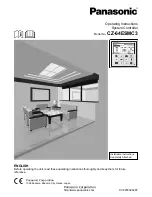
Programmable Safety Controller SCR P
10
www.bernstein.eu
- Tel: + 49 571 793 0
3.3 SCR P Using FID 2 Safety Controllers
Over time, BERNSTEIN adds new features to some devices. The Feature ID (FID) identifies the set of features and
functions included in a particular model. Generally, an increasing FID number corresponds to an increasing feature set. A
configuration using a higher numbered FID feature is not supported by a Safety Controller of a lower FID. Feature sets are
forward compatible, not backwards compatible.
Figure 3: Example SCR P label
3.4 Input and Output Connections
3.4.1 SCR P Safety and Non-Safety Input Devices
The SCR P has 10 input terminals that can be used to monitor either safety or non-safety devices; these devices may
incorporate either solid-state or contact-based outputs.
Some of the input terminals can be configured to either source 24 V dc for monitoring contacts or to signal the status of an
input or an output. The function of each input circuit depends on the type of the device connected; this function is
established during the controller configuration.
3.4.2 SCR P Safety Relay Outputs
The SCR P has two, three-channel, normally open (N.O.), safety relay outputs.
The Safety Outputs are designed to control Final Switching Devices (FSDs) and Machine Primary Control Elements (MPCEs)
that are the last elements (in time) to control the dangerous motion. These control elements include relays, contactors,
solenoid valves, motor controls, and other devices that may also incorporate force-guided (mechanically-linked) monitoring
contacts, or electrical signals needed for external device monitoring (EDM).
Functional Stops according to IEC 60204-1 and ANSI NFPA79
The Safety Controller is capable of performing two functional stop types:
• Category 0: an uncontrolled stop with the immediate removal of power from the guarded machine
• Category 1: a controlled stop with a delay before power is removed from the guarded machine
Delayed stops can be used in applications where machines need power for a braking mechanism to stop the hazardous
motion.











































